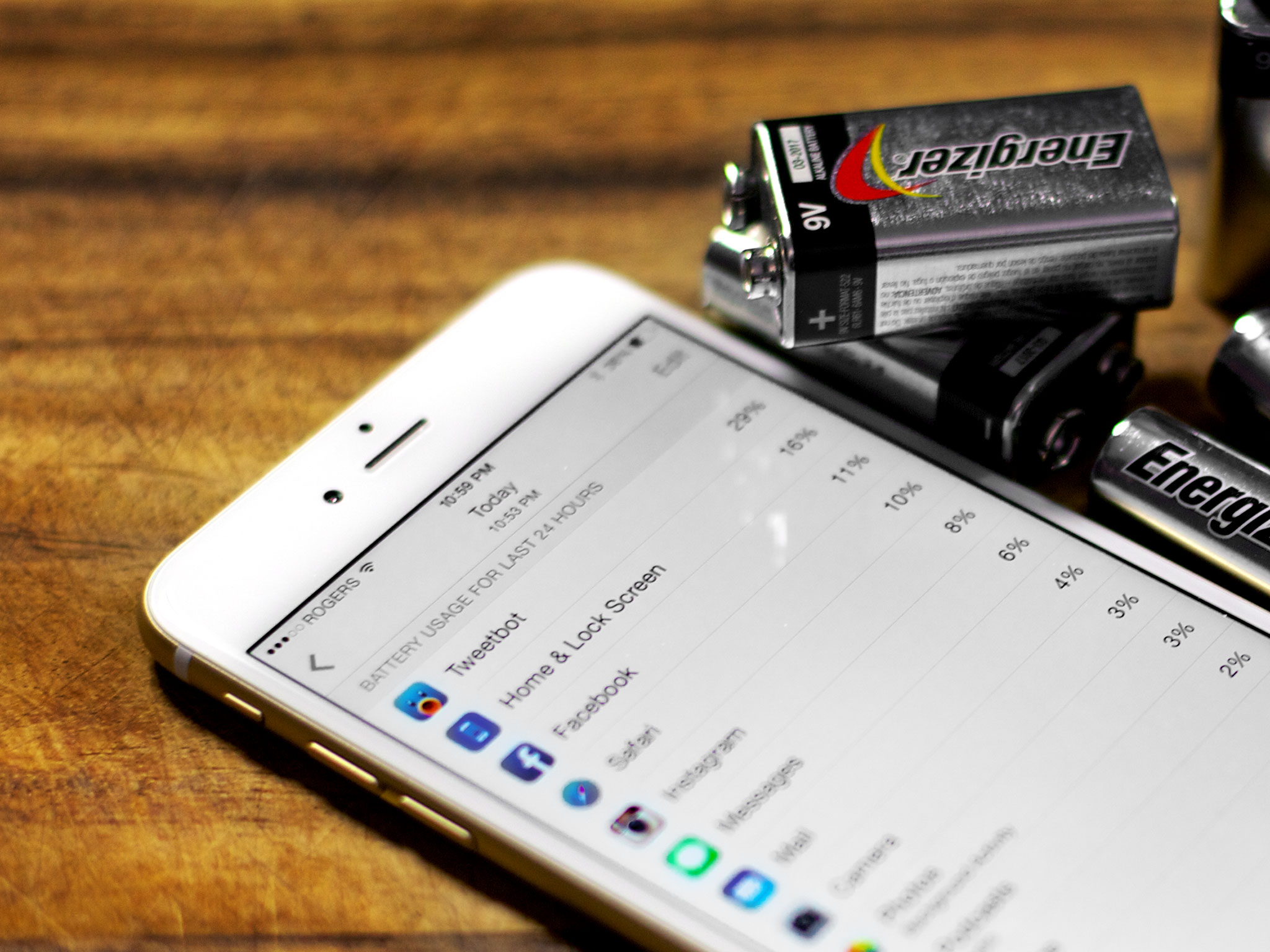Why the iPhone doesn't have a thicker, bigger battery

It then follows, under that train of thought, that Apple is deliberately sacrificing longevity for cosmetics. That the company is putting an obsession for thinness over usability. I used to wonder about that myself. Then I had the chance to speak to some people in the industry and discovered that batteries and battery life are, well... complicated. Here's the case for the thicker, longer-lasting iPhone as most recently made by Christopher Mims of the Wall Street Journal:
Take the latest iPhone. Let's do a thought experiment, starting with what has changed between the iPhone 4 and the iPhone 6. In four years, Apple's engineers made the iPhone 2.4 millimeters (0.094 inches) thinner, or about the thickness of three credit cards. Despite giving it a much larger screen, they also shaved off eight grams, or about the weight of a packet of ketchup.Given the size of its current battery, a little back-of-the-envelope math reveals it's more than reasonable that if the iPhone 6 were as thick as the iPhone 4, the iPhone 6 could have double its current battery life.
It sounds great in theory, but if you take an iPhone 6 as thick as the iPhone 4 and start to imagine how heavy it would be, you can start to see where it breaks down.
Apple was deliberate when they pointed out the iPhone 6 was actually lighter than the iPhone 4. They did that because, while thinness is nice and certainly improves the feel of the phone in both the hand and the pocket, it's lightness that matters. Lightness improves usability.
Battery life is the currency of mobile devices. Every feature you add, you pay for in battery life. That includes screens, radios, and it includes lightness. If a company like Apple is willing to pay that price, it shows how important it is to them — or how important they believe it to be for their customers.
A thicker, heavier phone starts to become a drawback when you try to hold it up for prolonged periods of time. It causes fatigue and eventually prevents you from using it, charged or not, for as long as you'd really like to.
An iPhone 6 or iPhone 6 Plus with the same thickness as an iPhone 4 would be too heavy for many people to read iBooks or watch movies for long periods of time, for example, while in bed or while on a flight. It would also be harder to balance and use one handed while walking around.
It's the same reason Apple's been striving to make the iPad ever thinner — to make it ever lighter and more usable.
Master your iPhone in minutes
iMore offers spot-on advice and guidance from our team of experts, with decades of Apple device experience to lean on. Learn more with iMore!
Also, batteries don't just hold in power — they hold in heat. They're insulators. Batteries are part of the reason why processor speeds need to be capped and ramped down over time. They're also not RF transparent, so they can affect how Wi-Fi and cellular radios work as well.
With Apple's current generation of thin-as-in-light phones, you can add a thicker, heavier battery case for those times when you want or need extra power. If Apple made a thick-as-in-heavy phone, you couldn't tear half of it off for the times when you really didn't need the extra boost.
This way, usability is the standard and bulk is the option, not bulk as the standard at the expense of usability.
If you occasionally start running low on battery, you can still charge your iPhone and keep using it. If it's constantly awkward or uncomfortable to hold, or too bulky for your pockets, there's nothing you can do. It's a brick.
John Gruber of Daring Fireball made a great observation:
Consider laptops — for years, battery life on a laptop was somewhere around 4 or 5 hours, at best. It was a struggle to use one throughout a cross-country flight. Today, you could probably fly coast to coast roundtrip with MacBook Air on a single charge.
The change in laptops happened when Apple redesigned them to be, essentially, giant battery packs, and Intel made x86 more power-efficient with chipsets like Haswell. iOS devices are already giant battery packs and ARM is already power efficient. That means, absent breakthroughs in battery chemistry, we might not get as dramatic an increase, but we'll get steady increases.
Chipsets and the processes used to fabricate them will improve, screen technology will evolve, and radios will get more efficient. Add even better race-to-sleep and other power-management techniques and, over time, Apple will end up with a light, usable phone that also has extended battery life.
The iPhone 6 Plus, with its day-and-a-half of charge capacity, shows that strategy already at work.
10:00am, February 24: Updated to better explain the trade-off between battery-life and bulk.

Rene Ritchie is one of the most respected Apple analysts in the business, reaching a combined audience of over 40 million readers a month. His YouTube channel, Vector, has over 90 thousand subscribers and 14 million views and his podcasts, including Debug, have been downloaded over 20 million times. He also regularly co-hosts MacBreak Weekly for the TWiT network and co-hosted CES Live! and Talk Mobile. Based in Montreal, Rene is a former director of product marketing, web developer, and graphic designer. He's authored several books and appeared on numerous television and radio segments to discuss Apple and the technology industry. When not working, he likes to cook, grapple, and spend time with his friends and family.